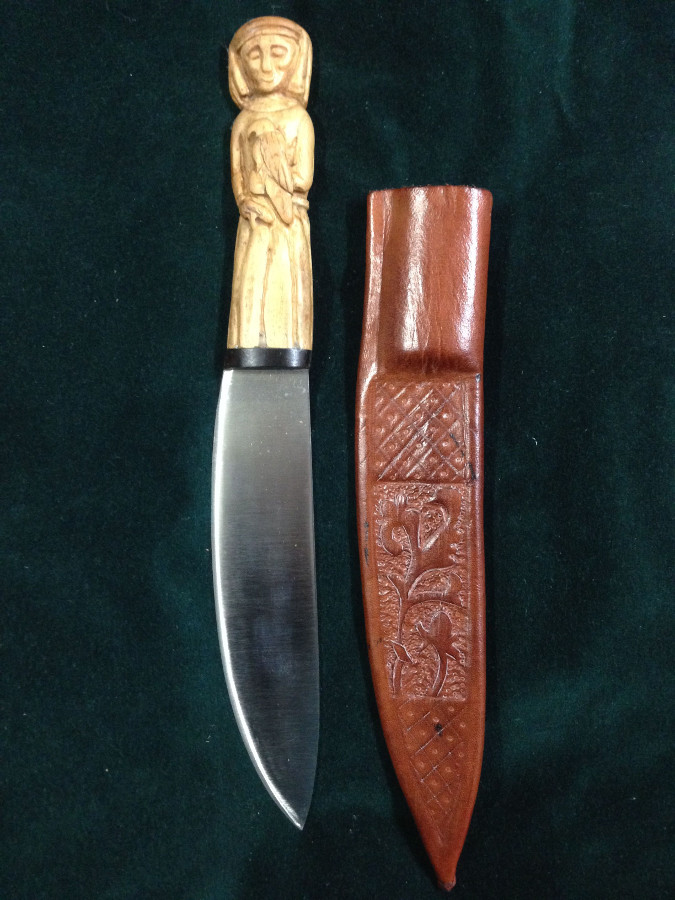
High carbon steel blades are still the choice of modern professional chefs and those who appreciate their strength, lasting edge and ease of sharpening. Very little work with a steel will hone an edge that a stainless knife can rarely achieve. Weighted correctly, with a comfortable handle and blade shape appropriate for the task, the high-carbon steel knife will outperform an equivalent stainless steel knife.
However like any quality tool, a little maintenance is required.
Basic maintenance:
– Wash knife with hot, soapy water after use;
– Dry immediately with a towel;
– Use a steel angled at 20 to 25 degrees regularly to keep the blade sharp;
– Use of a stone at intervals, will remove the microgrooves created by the steel and reset the razor sharp edge;
Storage:
– Pass a lightly oiled cloth (such as olive oil or vegetable oil) over the length of the blade and exposed metal;
– A leather scabbard will protect the edge from damage but not always from rust. A period technique involved a second inner scabbard of oil soaked textile, loosely tacked to the edges of the leather outer scabbard.
Do Not:
– leave the blade unwashed after use; food residues will mark and pit the blade;
– wash your knife in the dishwasher; The corrosive agents used in the dishwasher powders and liquids will pit and mark both the blade and the handle, and reduce the life and appearance of the knife.
– use the knife tip as a can opener; It will break the point off.
Repairs:
– A good quality silver polish and soft cloth will remove most discolouration’s and store as above;
– an abrasive pad such as a green scourer will remove most light surface rust;
– Where there is severe rust and or discoloration, a buffing wheel will remove the stains and return the edge;
– Store as above;
The knife pictured in the feature image was hand-carved by Adam McKay in Australia. Carved in the round, it portrays a young lady with a tame bird of prey. The form is modelled from a popular theme found across Europe and Scandinavia from c. 1200-1400 of young women with birds, dogs and musical instruments. Because extant examples are invariably from ivory, this reproduction is olive wood;?a fine carving wood and fitting substitute. This knife is for sale on our shop, and similar knives can be commissioned via? our Shop.